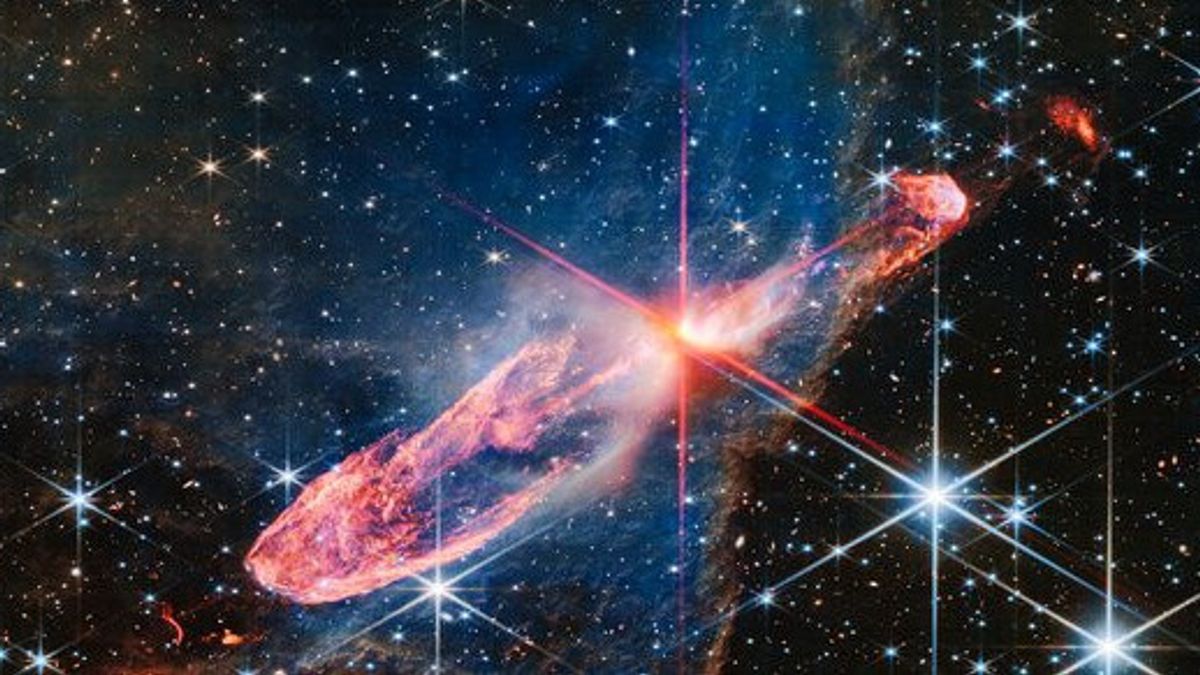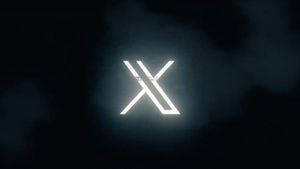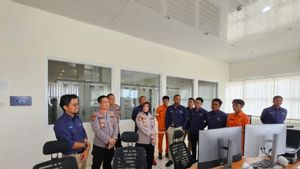JAKARTA - The James Webb Space Telescope has just caught a pair of young stars actively forming themselves, known as Herbig-Haro 46/47.
The star was captured by the Webb Telescope on a high-resolution image with near-infrared (NIRCam) light, which is 1470 light-years away in the Vela constellation.
To find the young star pair, scientists are tracing the spike in pink and bright red diffraction in images obtained by the Webb Telescope, the star is in orange-and-white patches.
They are buried deep in the disks of gas and dust that feed them as they continue to add to the mass to grow. Although the disk is invisible, the image can be seen in two areas of the dark cone that surround the central star.
A pair of actively forming stars have delivered jets in two directions for thousands of years. Herbig-Haro 46/47, has been studied by many telescopes, both on land and in space since the 1950s.
However, the Webb Telescope was the first to capture it with high resolution in its NIRCam. The most striking detail is the two-sided lobe that spreads from an active central star forming, represented in a flaring orange color.
Most of this material was fired from the stars as they repeatedly swallowed and emitted gas and dust that immediately surrounded it for thousands of years.
When material from newer ejections meets older materials, it changes the shape of the lobe. The activity is like a large fountain that is turned on and turned off quickly, but sequentially, causing the pattern to billow in the pool below.
SEE ALSO:
Some jets deliver more material and others launch at high speed. It is likely related to how much material falls onto the star at a given time point.
The ejection of the newer stars appears with a blue thread-like color. They run just below the spike in red diagonal diffraction, this burst makes the corrugation pattern clearer.
All of these jets are very important for the process of star formation itself. Meanwhile, the ejection regulates how much mass stars have finally collected, as quoted from the official ESA website, Saturday, July 29.
There are edges of the nebula appearing in the soft orange line, such as the twisted letter L along the right and below the image. The existence of the nebula is quite important, as it affects the shape of the beam fired by the central star.
When the material released hits the nebula at the lower left, there is more chance for the jet to interact with the molecules inside the nebula, causing the two to turn on.
Over millions of years, stars in Herbig-Haro 46/47 will be fully formed, clearing the view of these fantastic colorful ejections and binary stars could be the center of attention to galaxy-filled backgrounds.
The Webb telescope can reveal so many details in Herbig-Haro 46/47 for two reasons. The object is relatively close to Earth, and the image on the telescope consists of several exposures that add to its depth.
The English, Chinese, Japanese, Arabic, and French versions are automatically generated by the AI. So there may still be inaccuracies in translating, please always see Indonesian as our main language. (system supported by DigitalSiber.id)
















